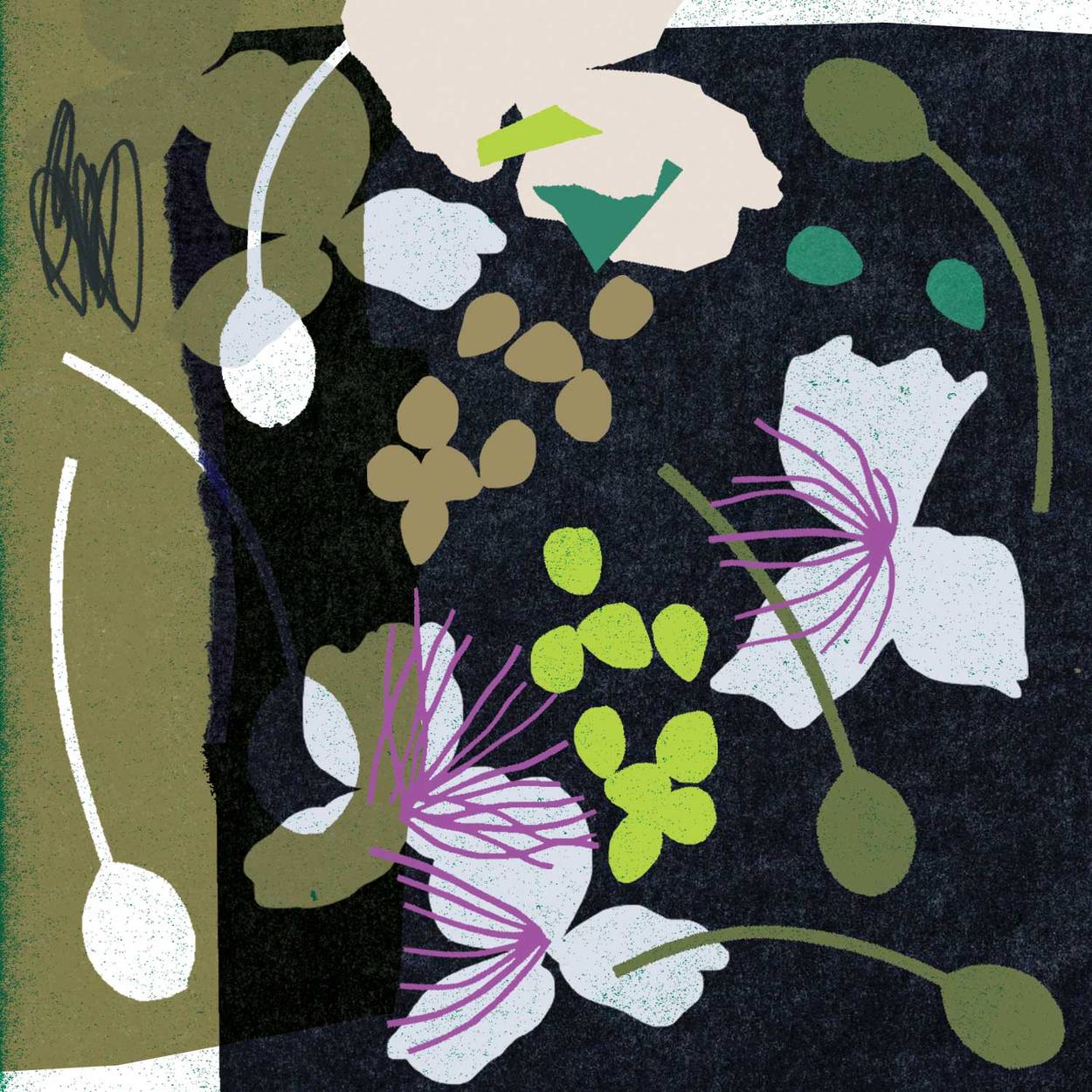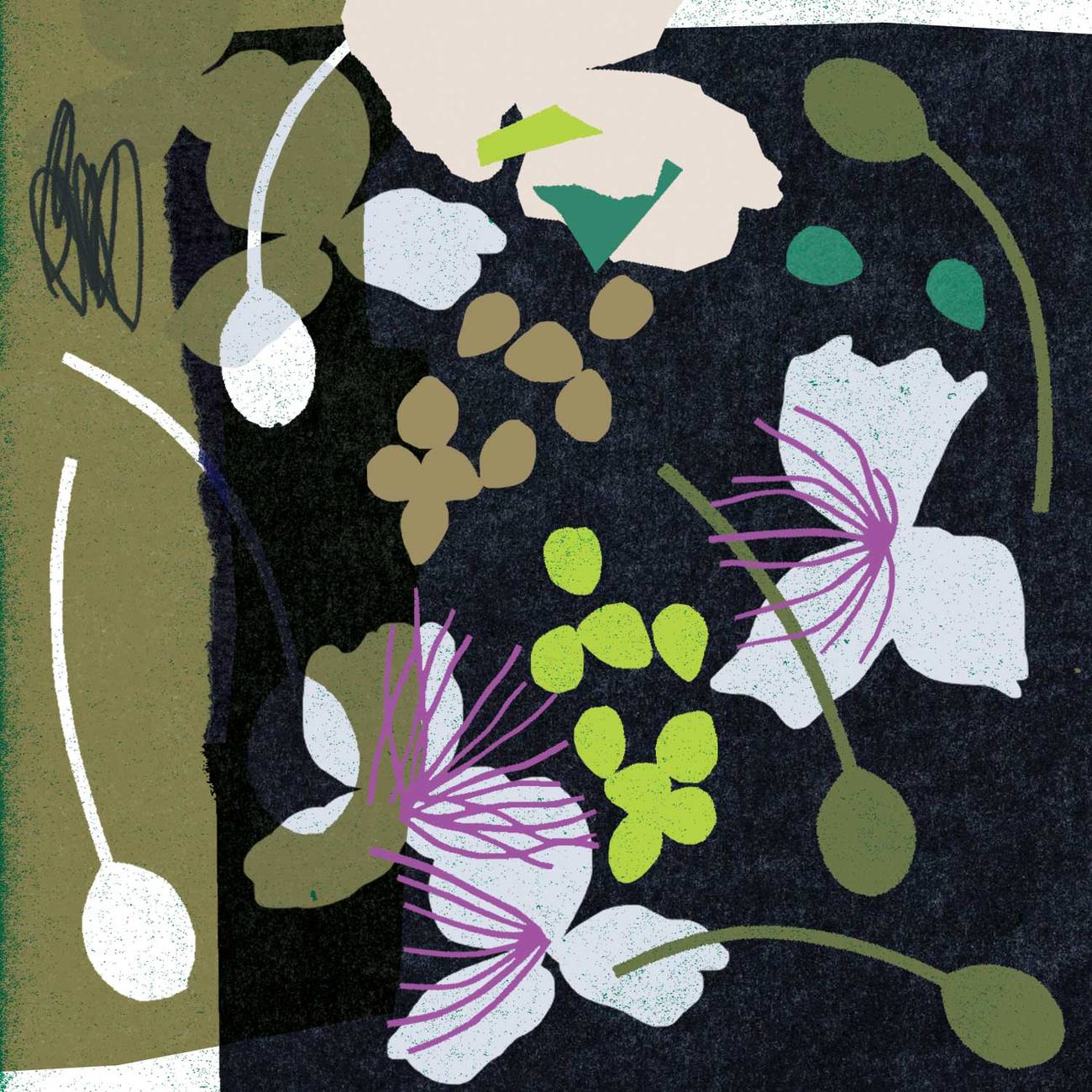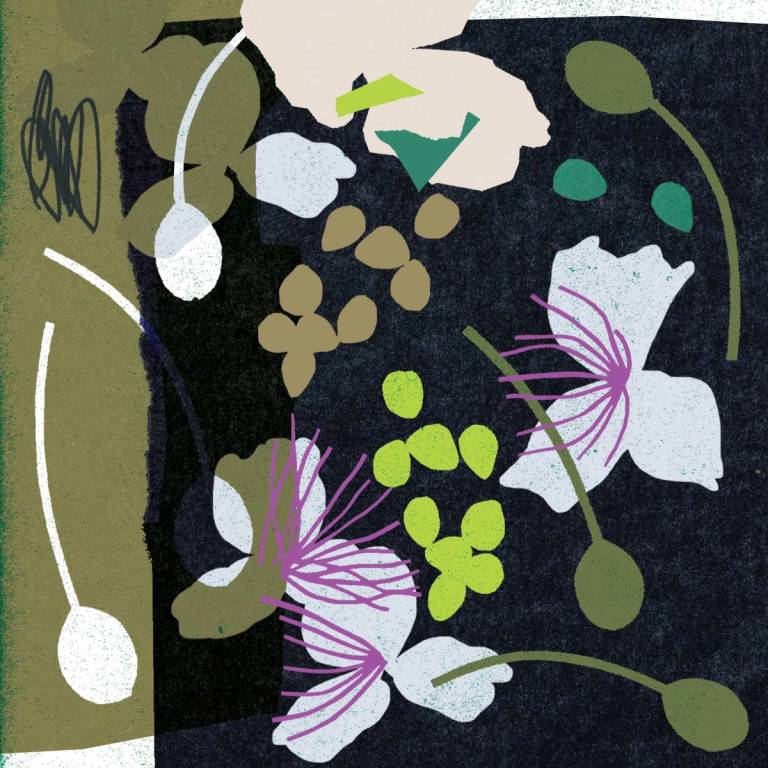The caper bush (Capparis spinosa) has grown wild around the Mediterranean for millennia. It is one of the few plants that flourishes between the Judean desert and the Dead Sea, the lowest point on Earth, because it thrives in poor soil and arid conditions. Its long roots can penetrate rocks, which enables it to grow even in difficult sites—even at the Western Wall in Jerusalem.
Wild caper berries were mentioned in the Sumerian Epic of Gilgamesh, an epic poem written in Mesopotamia more than 4,000 years ago. The ancients believed capers had aphrodisiac qualities. In Ecclesiastes 12:5, they are named symbolically in a verse about the physical desire of the aging.
Capers were known to the Greeks and the Romans. The book of ancient Roman cookery De Re Coquinaria (On the Subject of Cooking) recommends adding capers to his recipe for sala cattabia—a salad made with pepper, mint, dried pennyroyal, cheese, pine nuts, honey, liquamen (a fermented fish sauce widely used by the Romans), egg yolk, and bread soaked in water with vinegar. The Romans also used capers to stimulate the appetite and to treat a variety of illnesses from toothache, paralysis, and fevers to erectile disfunction. In fact, the caper bush still thrives on the Acropolis hill in Athens and along the Aurelian walls that surround the city of Rome.
The Mishna describes capers, called kahfars or tzalaf, as a kind of “budding fruit” and tithable crop, that was widely grown in Judea. At that time, caper berries were often employed to produce caper wine, which was one of the ingredients of the ketoret—an incense made with a blend of herbs and balms that was used as an offering on Yom Kippur. The Talmud states that this offering would bring blessings of wealth to whomever offered it on the altar. Each priest was given the chance only once in his lifetime, so that as many priests as possible could have this opportunity.
Capers are the edible flower buds of the caper bush, while caper berries are the immature fruit; mature fruit are less desirable, as they contain hard seeds. Both the buds and the fruit are generally dried in the sun, then salted or pickled in vinegar, brine, or wine. They can be used as a condiment or garnish, and their piquant taste gives a delicious burst of flavor to sauces, dressings, eggs, fish, and pasta. Caper berries can also be used instead of olives in bloody marys or dry martinis. Ashkenazi Jews like to add capers to potato salads and Liptauer cheese, or to give a tang to New York-style bagels with lox and cream cheese.
Capers are widely used in Mediterranean cooking, especially that of Cyprus, Italy, France, and Greece. They often feature in southern Italian cooking, where they are combined with olives in such classic dishes as the Sicilian eggplant caponata and the Neapolitan spaghetti alla puttanesca—spaghetti in a spicy tomato sauce with olives, capers, garlic, chile, and oregano. (The finest capers are said to be cultivated on the Italian island of Pantelleria, where they have PGI—protected geographical indication—status.) In Greece, capers are often sprinkled over Greek salad, and kaparosalata sifnou, an onion and caper salad, is one of the specialities of the island of Sifnos. Capers also feature in a variety of French sauces like sauce tartare, remoulade, and ravigote, as well as the well-known Provencal tapenade, which also includes olives and sometimes anchovies.
In Egypt, capers often appear in michoteta—a feta cheese, cucumber, and chopped onion salad that is sometimes served alongside ful medemes. Apart from the Mediterranean, capers are also found in the Arabian Peninsula, Ukraine, Armenia, Azerbaijan, Georgia, and Central Asia.
As they are very strong tasting; it is best to use capers sparingly, so they do not overpower the flavor of a dish. Salted capers are usually rinsed under cold water before using, then patted dry. Pickled capers can be used directly from the jar or rinsed under cold water.
There are several varieties of capers that range from the size of a baby pea to the size of a small olive. The smallest capers—like the nonpareils from the south of France, which are no more than 1/4 inch in diameter—are prized for their fine texture and delicate flavor. Other varieties include surfines, capucines, and grusas—which can exceed 1/2 inch in diameter. As a general rule, the larger the caper, the more acidic the taste.
Capers not only give a delicious tang to food, but are also very nutritious. They are rich in antioxidants, especially quercetin, that help neutralize free radicals, improve wound healing, and promote healthy blood-sugar levels. They also contain vitamin K, which is needed for blood-clotting and healthy bones. However, as capers are high in sodium, they should be avoided by anyone with high blood pressure.
When packed in brine, capers can be stored in an airtight container for up to nine months, as long as they are completely submerged. Salt-packed capers can be stored at room temperature and will keep up to six months. Any signs of discoloration or bad odor is an indication that the capers are bad and should be discarded.
Paola Gavin is a food writer and author of four vegetarian cookbooks including Hazana: Jewish Vegetarian Cooking. Follow her on Instagram @paolagavin and on Twitter @paolagavinfood.


